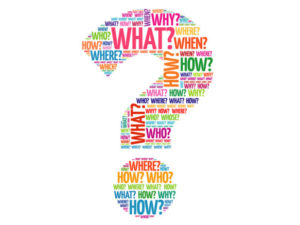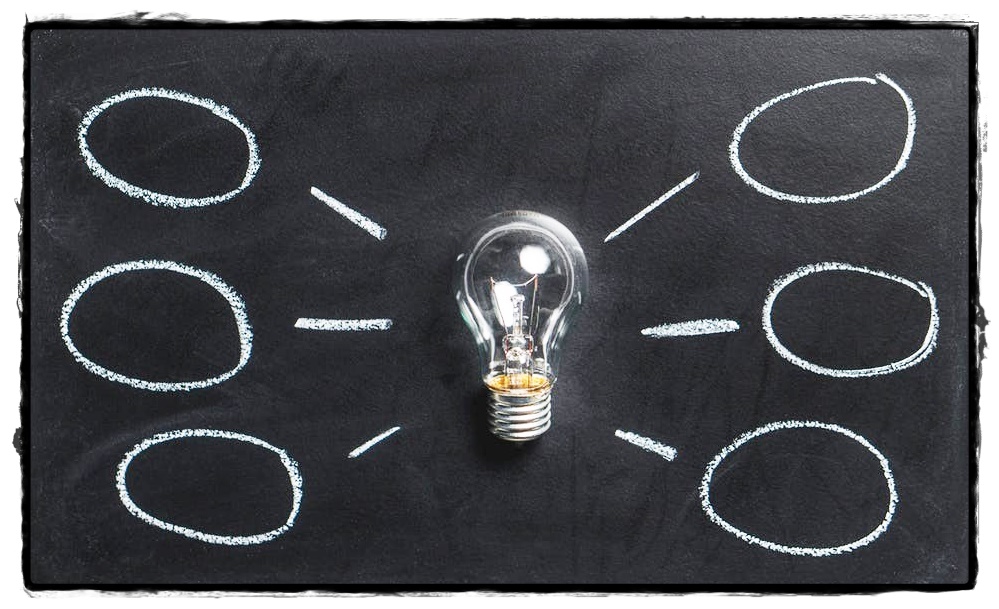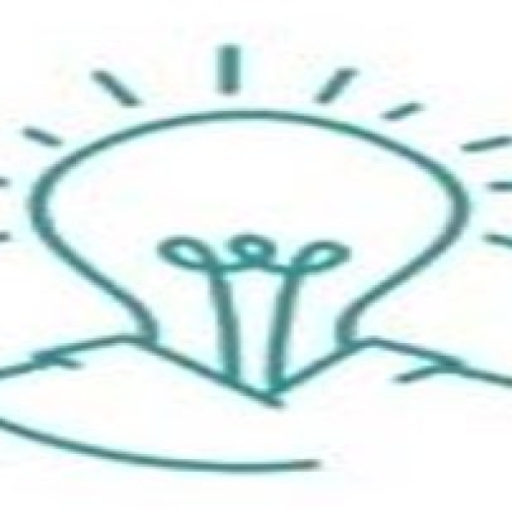Table of Contents
Asking the Right Questions – An Essential tool of Thinking Creatively
Thinking Creatively is the skill of being able to think differently. To discover new possibilities. Get new ideas, and see the great panorama outside the box.
It is to develop awareness and occupy whitespaces, which means create a new space in the mind for what has not been explored and occupied yet.
So much in creative thinking depends on the skill of asking the right open-ended questions, especially in times of crisis where everything changes by the day.
This is the time to learn to dare to be with the unknown and not look back to the past for answers.
Open-Ended questions

Learning to ask the right question is 80% of the answer.
It’s like a compass of finding the right answers.
Answers hide in the dark, questions are like a flashlight that first locate the environment of the answers.
Once the environment is located the questions refine and become more pinpointing the answer “gives up” and volunteer’s itself. That’s how it works!
Asking Open-ended questions puts us on the path to the big picture. This is the main tool for thinking creatively that I use when conducting think tanks.
This part of creative thinking training is called ASK and it shows people how to identify the key questions.
It is necessary to ask open-ended questions each time even if we think we know the answers.
That is because the whole idea of thinking creatively is to be freshly in the NOW and not assume we know the answers.
The nature of the open-ended questions is to allow new perceptions to appear, reveal the new vision, bi-pass fears, challenge belief systems, examine existing paradigms, dare to disrupt the “holy cow” syndrome, engage in free unbiased thinking, discover the unknown and free up mental and emotional constraints.
There’s quite a crop of skills that come to those who dare to ask.
Open-ended questions embrace the unknown and provide a futile ground for thinking creatively.
Examples of open-ended Creative thinking questions -not for the lazy person
A good creative thinking question does not ask for an answer but rather for a process, from which many answers can come. I am sure you heard the proverbial wisdom that you can give a person fish to eat or teach them how to fish.
- What are the different possible scenarios that can result from this decision?
- How can I empower my situation?
- What are the facts that I have not taken into account?
- How should I think about… in a way that allows me to be more neutral and less biased?
- What are the biases I have about the situation that are blinding me?
- How do I connect to the power of Now and not be imprisoned with expectations of the past?
- What am I not seeing?
- What is it, that if I would change, will make a critical difference for me?
- Am I taking into account all the variables and consequences…?
- Which attitude is the best attitude to have about this…?
The common denominator of the examples above is that they get you to consider a bigger picture, and not merely produce answers of convenience that prevent thinking creatively, such as yes and no answers.
Ask And You Shall Be Given

There is a well-known biblical saying which I am sure you’ve heard “Ask and You Shall be Given“.
This statement has a profound meaning and multiple levels of understanding to those who care & dare to find out. It goes right to the core of thinking creatively.
It points to a state of mind that addresses the fact that a human was designed to ask questions in order to move on in their development.
We humans can grow each and every day but not if we are laid back and ensconced in our comfort zone, which often is not so comfortable.
The esoteric meaning of asking is to turn the key and try to open the doors that are currently locked to us, especially the “Door OF The Great Gifting” which when we open it we find out that the great gifting was the urge to never look back but always endeavor forward.
This is saying that gifts come to those who ask and the greatest gift of all is to ask because it is the “master key” that opens all the doors.
Mind you, there are different ways of asking which we’ll touch upon later in this article.
To ask from a genuine place is to prepare the soil for seeding. The soil is the brain and what we think is the seeds.
When we ask open-ended questions we prepare the soil for the new seeds (ideas) from which we can create a new reality (actions).
Asking Is An Attitude

Asking is not just done verbally. It’s an attitude of being open and not thinking one knows what there’s to know.
Children are a good example of how lively thinking creatively sounds.
They ask a lot of questions because they are on a life quest. Adults lose that somewhere in the process of growing up…or diminishing down.
- Do you know how to ask questions that come from the passion of wanting to know?
- Do you ask questions that come from real curiosity not just from trying to pass an imaginable exam?
- Do you have the courage to ask questions even if you think they sound stupid?
You may discover that you are one of many people who rather keep quiet and not expose themselves by asking questions because of the fear of being judged or looking stupid. my suggestion is to fight that fear.
The rewards are well worth it. “When you ask you care”, if… it’s not a merely cheap question of a passing curiosity or a “how” question that just wants a quick fix to pass an imaginary test.
How Creative Thinking & Emotional Intelligence Connect

Thinking creatively and emotional intelligence are connected simply, because, it is very often the E-motion that moves people to ask questions.
So if you are in the business of trying to help people you need to be sensitive to what emotions hide behind their questions.
Fear can ask questions, wanting to be recognized can ask questions, humility can ask questions, “me, me me” can ask questions and many other emotions, too many to enumerate here.
Any good negotiator knows that questions hide other questions that are emotionally based. Contrary to popular belief emotions are at the center of decision making and if you are sensitive to the emotional needs of other people you will know how to ask questions that demonstrate empathy and will, therefore, make you effective and respected.
It is possible to detect where questions are coming from and from that detect the need hiding behind the question. It’s important to keep in mind that very often questions camouflage their true source & intention.
We often tend to personalize questions and attach them to names and statuses. This is about personalizing questions and detecting where they are coming from in the person.
So it’s possible to detect an attitude, insecurity, curiosity, one of many possible fears, happiness, disease, imbalance of some kind, emotional distress, and many others.
Emotions move people & questions produce the intelligence that uses the correct emotions. That’s how c thinking creatively and emotional intelligence connect.
The Passive Part of Creative Thinking

Creative thinking has an active part and a passive part. The active part is the active pursuit, the research, the prodding, the asking.
The passive part, which is equally important and less known about is creative listening, which is the ability to listen to what is not being said but nonetheless communicated through nonverbal communication, emotions, and instincts.
The passive part of thinking creatively enables a state of heightened perception inside the listener who is acutely tuned in with all their senses, not just casual listening.
It provides for a high level of knowing and understanding of what is happening on a deeper level.
Very few ever practice it in the professional setting of business and because of it they miss a lot of possibilities of what thinking creatively offers in communication and effectiveness.
Asking for What You Want Vs. What You Need 
ASK is research and therefore should not be preempted by past ideas or experiences.
ASK first what is the need, not what do I want. What you want can throw you off from the real need.
It’s necessary to realize that Need and Want can be at a great distance from one another and that Creative thinking, open-ended questions are the bridge. that connects them.
Thinking creatively by using the tool of open-ended questions can help eliminate the bias that comes from blind wanting (you know the saying Ambition Is blind). True needs have no bias and are a source of energy and inspiration.
3 Levels of Asking Creative Thinking Questions

Level 1 – Daring to ask questions without editing yourself. This program will help with mental toughness and emotional resilience.
Level 2 – Finding the open-ended question that gets you to the next level of thinking creatively and thus improving personal and organizational development.
level 3 – Questions that open the door to building a cohesive team, discovering the collective attitude that always creates space for what next.
The One Small Change in Creative Thinking Questions That Makes a Huge Difference

The one small/huge change in thinking creatively that makes a world of difference is to replace the WHO with What.
Instead of personalizing the question, you hear with having a view of WHO is asking the question, ask yourself internally WHAT is asking the question in that person.
By doing so you eliminate any bias you may have about the person which will distort your perception of their question and thus you safeguard yourself from all kinds of destructive attitudes.
This is how you develop the right sensitivity to detect the question behind the question and respond to the need of the other person that hides inside their question.
You become more neutral and therefore more exact without being hijacked by wrong emotions that you may have built up about that person, which makes you a better leader.
Sensitivity to the needs of others is an important part of the ability to think creatively.
This is a great example of how changing the focus by changing one word can mean a world of difference…and It does every time!
Finally
Hey folks, we are in times of crisis and it’s clear that most people are lost in their old ways of thinking that do not cut it anymore as evidenced by the mass protests around the world of the young generations.
Most leaders, except some notable individuals, mostly women, do not know how to deal with change and have not acquired the skill of thinking creatively.
many professionals and many leaders make the mistake of looking back to how things were and fail to think according to the now.
Thus the tool of thinking creatively and asking the right questions eludes them.
I think that the best take for you the reader from this article is to realize that your skills and your ability to put them to work, especially in times of crisis, can make you a leader “by example”, which are the 2 most important words that define authentic leadership.
Leadership is not a fancy title to gloat about, as many so-called leaders do without penalty these days.
In fact, it’s an honorable function of service to those who look up to you for inspiration, motivation and thinking creatively with compassion.
Perhaps there are no leaders left, so what about you?
What Can You Expect From a High-Level Creative Thinking Training?
- Learn about the importance of questions to think creatively, especially at times of change
- You will be introduced to The Thinking Coach creative thinking training program called ASK which will explain and demonstrate the value of questions to the ability to think creatively
- Learn what open-ended questions are.
- The question and the emotion behind the question – You will learn to detect the origin of questions
- Make the connection between thinking creatively and emotional intelligence.
- Get key insights on how to ask the important questions that will help you thrive not just survive.
- Learn to use this tool to think creatively by asking yourself the kind of questions that will separate you from panic and mass hysteria and connect you to the big picture
For The Thinking Coach, Creative Training Seminar/Webinar just ASK!
Eli Harari
The Life Coach for Professionals™


Hello, Wow this program sounds like it can really move us to a place of great new openings. The concept of ASk seems to delve into ways to reinvigorate the corporate climate as well as the private blogger.
I so enjoyed reading this article. And something to think about going through this process.
In peace and gratitude, ariel
Thank you Ariel for leaving a comment, I am glad that this article has offered you some fresh outlook, that is the aim of it.
ASK is a very useful and wide concept that needs to be investigated in depth in order to reap its full benefits.
That is why I developed this training.
All the best
Eli
Eli, it seems you have developed a program so very needed in businesses of all types and sizes today…opening up to new and creative thinking judgment-free zones is crucial to staying on top and in the lead. How very exciting and energizing for today’s thinking and growing…
Annie
Thank you Annie for your feedback, indeed this is my aim in guiding people to think creatively and strategically.
Thank you for leaving a comment
Eli
Pingback: The 3 Crucial Tips To Master Leadership Soft Skills